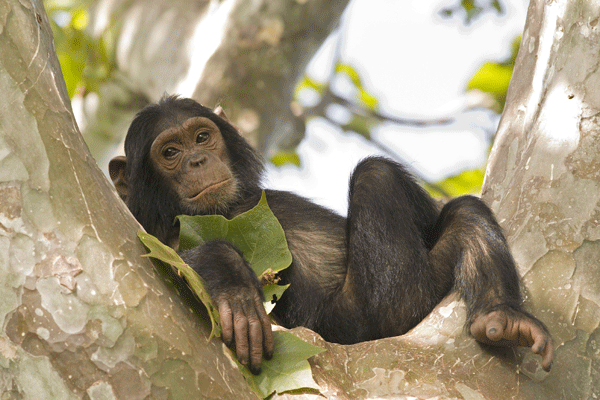Having only been awarded the protective status of National Park in the late 60s, the significance of Tanzania’s smallest forest reserve was, for a long time, unrecognised. Had this transition not taken place, the world might, today, be tragically oblivious to the astounding genetic similarities between humans and chimpanzees. Only accessible via boat, skimming the surface of Lake Tanganyika, and humbly hiding in the shadows of the Mahale Mountains lies Gombe Stream National Park. Spectacularly positioned on the eastern shores of Lake Tanganyika and extending a mere fifty two squared kilometres towards the neighbouring Democratic Republic of Congo, an entangled existence of tall trees and alpine bamboo morph into a glorious tropical rainforest. Take a guided tour through Gombe Stream National Park, which since 1968 has been known for the protection of its population of wild chimpanzees, amongst other endangered primates.

Today, due to the dedicated research by scientist and animal behaviourist, Dr Jane Goodall, visitors to this entirely unique environment can observe families of chimpanzees in their natural habitat, as they engage, groom, communicate, forage and feed. A human-animal interaction sought after all over the world and well-documented for television, this tangible experience is astonishing and invigorating, not to mention, radically informative.
Due to its protected status, Gombe Stream’s steep valleys and mountainous peaks, dressed in treetop greenery, have gathered a plethoric number of species and a diversity of vegetation, making it an increasingly popular tourist destination. The two hundred plus species of birds adorn the criss-crossing branches that stand tall above the wet, leaved ground. The warm tunnels and pathways beneath the nourished soil and decomposing leaves create miniature ecosystems humming with insect life. Feathery-eared bush pigs are famous forest dwellers in Gombe Stream, reminding chimp-searching visitors to peer at the ground once in a while. Eleven species of snakes find homes amongst the fallen trees and in burrows beneath the ground. Hiding places ever-present; the tropical flora houses the elusive leopard, while the wetness of its Tanganyika shores invites the presence of hippos to this small and unusual National Park.

Low-key lodges in the Park do not apologise for the splendour of this wild environment and encourage guests to savour the spectacular surroundings as they step out on foot into this tropical lakeside forest. Gombe Forest Lodge nestles under vast mango trees on the shores of the Lake, while Kigoma Hilltop Hotel is a short boat trip away, scenically positioned atop a remote rocky outcrop off the mainland of Kigoma town. Walking in between the trees, hiking up fairly steep inclines and clambering over boulders; while strikingly beautiful and engaging for the senses, at times these excursions bear no fruit. Chimpanzees move in groups, often away from where tours in the park are led, meaning that sightings are not guaranteed. Landing the money ticket, and hearing the chattering and screeching of the family members overhead, is indescribably rewarding. The knowledge of the experience being unique and truly natural sweetens this already sugar-coated interaction with the wild, and the sore muscles and sweat are well worth it.
A visit to Gombe Stream National Park would be initiated by the curiosity of seeing man’s closest genetic relative ingeniously designing tools for gathering and eating their food, lovingly doting on one another, and typically arguing amongst themselves. A ninety eight percent genetic similarity with humans; it is no wonder people are drawn to chimpanzees’ uncanny impersonations and emotional sentiments. However, human interest turns to greed, which has rendered this an endangered species and threatens the actual existence of these fascinating and vital primates. Gombe Stream National Park has been dedicated to the protection, development and understanding of chimpanzees for over forty years, thanks to the love and commitment of Dr Jane Goodall, and now presents the opportunity for observers to witness the enthralling behaviour of these animals in their wild African jungle.


